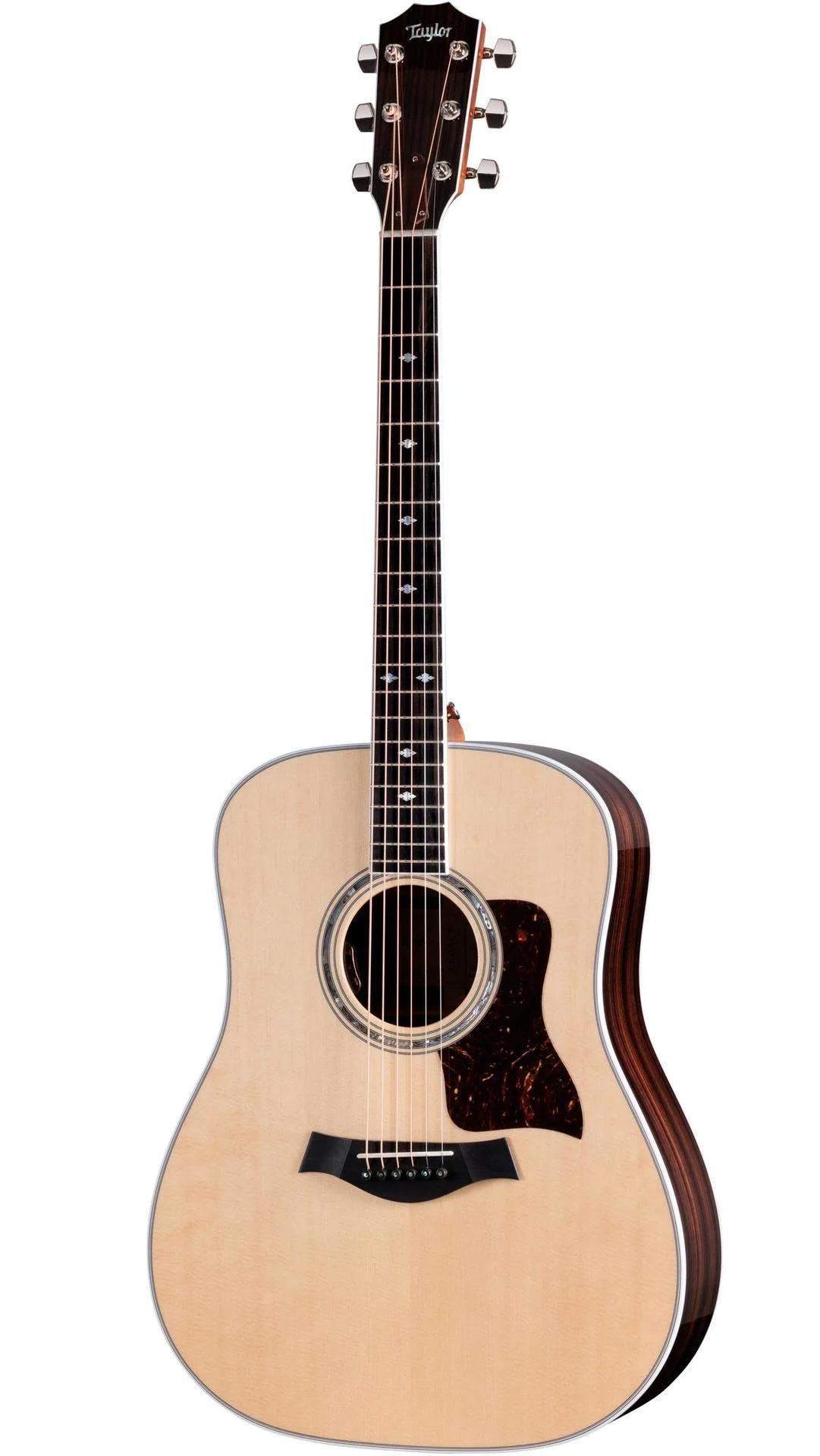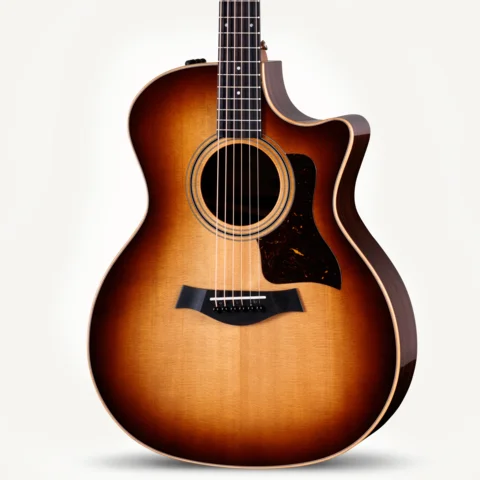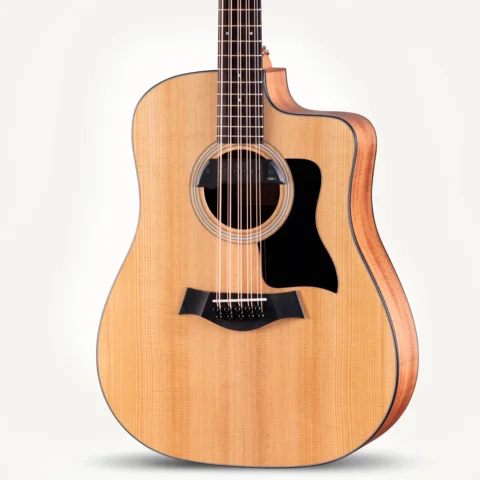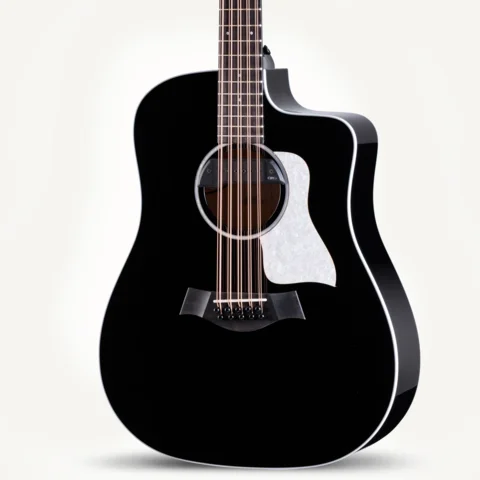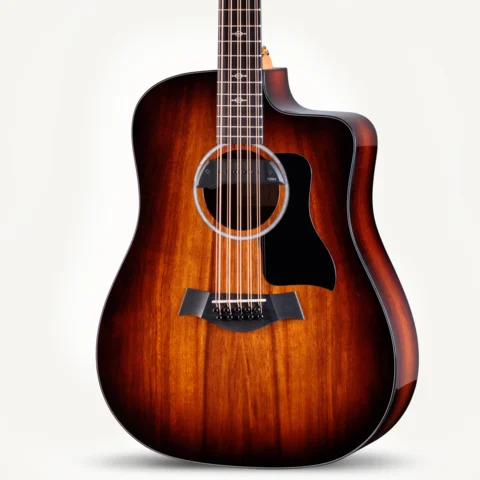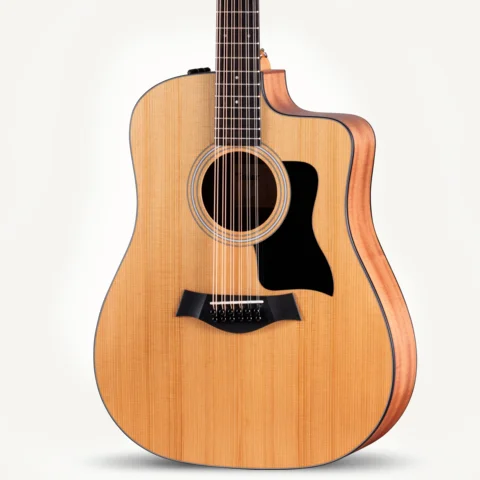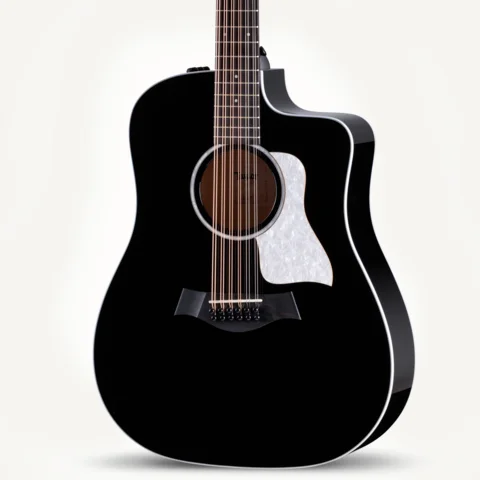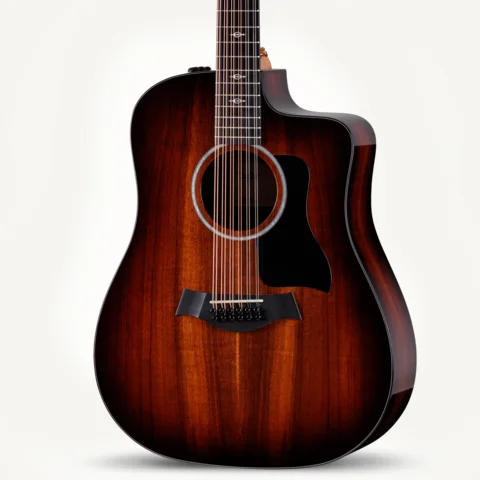
Explore a wide range of body styles, from the travel-size Baby Taylor to our jumbo-size Grand Orchestra.
To learn more about what distinguishes each Taylor acoustic body shape and how to find the shape that’s right for you, explore the Taylor guitar guide.
Explore All Acoustic Features
The type of wood used for a guitar’s soundboard has a major impact on its tonal properties.
Each acoustic series boasts a unique package of visual details that enhance the aesthetic appeal.
Our inspired proprietary pickups faithfully reproduce the natural nuances of a Taylor guitar’s voice.
Guitars with a unique musical personality, including 12-string, 12-fret, nylon, baritone and travel.
Taylor’s eco-friendly, UV-curable finishes protect your guitar and keep it looking and sounding great.
Bracing patterns, such as our new V-Class design, bring out each guitar’s unique voice.
Our patented neck design ensures superb intonation, playability, and lasting stability.
Our elegant cutaways add to a guitar’s shapeliness and broaden your playing range.
An armrest softens the edge of a guitar body to create a more comfortable playing experience.
What makes the Taylor Dreadnought different from other dreadnought guitars?
Taylor’s Dreadnought body shape is nearly identical in dimensions and design to the traditional dreadnought body. Visually, the most noticeable distinction would be in the Taylor Dreadnought’s “shoulders,” the portions just above and below where the neck meets the body. Some dreadnought guitars from other manufacturers may have more rounded shoulders, similar to our Grand Pacific shape, which is based on the classic dreadnought but with a more sloped-shoulder profile.
In terms of sound, though, Taylor’s Dreadnought may differ from dreadnoughts produced by other builders. Most players look to dreadnought-style guitars for a big, bold voice with plenty of volume and projection, along with greater presence in the bass range. Taylor’s Dreadnought guitars certainly offer all the volume and projection of a traditional dreadnought, but in typical Taylor fashion, we’ve worked to tweak the design to offer a voice that’s considerably more balanced across the tonal spectrum, with the goal of building an instrument that’s versatile enough to perform well in most musical scenarios. That balance—with the response mostly even across the treble, midrange and bass range—makes it easy for players to fit into a mix with other instruments on stage, and it also helps our Dreadnoughts record well in studio applications where additional bass presence could lead to muddiness in the mix.
For flatpickers, this offers greater articulation with a crisp, clear character that makes it easy to stand out with lead lines, especially with an aggressive attack.
Other distinctions include those that set all Taylor guitars apart from the crowd, including precision craftsmanship, attention to detail, and playability. We strive to build every guitar, from our Academy Series to the Presentation Series, to the highest quality, aiming to provide guitar players with instruments that are comfortable and accommodating to play regardless of stature or skill level. That commitment includes a full guitar setup at our factory for every model, ensuring that when you pick up a Taylor at a shop, you’re guaranteed an easy-playing experience that helps you sound your best.
Who is the Taylor Dreadnought best suited for?
Like most Taylor guitars, our Dreadnought models are built to be extremely versatile, offering utility across genres and playing styles. However, this body shape tends to attract traditionalists thanks to its recognizable profile and commanding volume. It’s especially perfect for strumming and cowboy chords, while also remaining articulate enough for lead lines and even fingerpicking styles. We’ve found that players in the folk, bluegrass, country and other Americana styles tend to gravitate toward Dreadnought guitars.
However, we feel strongly that every player is unique and that guitars, like all instruments, are highly subjective, so you shouldn’t limit yourself to one type of guitar or disqualify yourself from trying a Dreadnought if you’re not a country or bluegrass player. We recommend going into a shop and playing several different types of guitars, depending on what your dealer has available, to find the best guitar for you.
Which Taylor models feature the Dreadnought body shape?
Taylor produces a range of Dreadnought guitars, most of which are built at our state-of-the-art facility in Tecate, Mexico. The majority of our current slate of Dreadnought models is spread across our Academy, 100, and 200 Series, which offer an array of tonal flavors across price points that tend to be more accessible to everyday guitar players. Guitars from those series, including Dreadnought models, feature layered-wood back and sides, which allows us to produce high-quality guitars at more affordable prices. However, every Taylor guitar features a solid-wood top, which is the portion of the guitar that contributes most to its sound, so you’ll always get a rich, full voice no matter which model you choose.
The exception in the current Taylor lineup is the Legacy 810e, a Dreadnought acoustic-electric guitar featuring solid Indian rosewood back and sides paired with a solid spruce top. As part of our Legacy Collection, this model is inspired by Bob Taylor’s earliest builds in the founding days of our company, and includes traditional elements such as X bracing and sleek appointments like its faux-tortoiseshell pickguard.
Other Dreadnought models include:
- Academy 10e
- 150ce (12-string)
- 110ce
- 210ce
- 210ce Plus
- 250ce-BLK Plus (12-string)
The third digit of Taylor model numbers indicates the guitar’s body shape. In this case, the Dreadnought shape is represented by a “0” in the third digit.
The Dreadnought body shape may also be available as an option in our custom guitar program. Available features for custom guitars vary, so visit your local Taylor dealer and ask about creating an order for a custom guitar to find out if the Dreadnought is currently available.
How does the Dreadnought compare to other Taylor body shapes?
In terms of size, the Dreadnought is among Taylor’s largest body shapes, with wider curves and proportions than our more compact Grand Concert shape and the midsized Grand Auditorium.
The Dreadnought is most similar to the Grand Pacific, a more modern take on the dreadnought blueprint and an original Taylor design. The Grand Pacific features similar dimensions in the waist and lower bout, but with more rounded shoulders. If you’re interested in dreadnought guitars but you’d like to explore a wider range of model options within the Taylor line, we highly recommend checking out Grand Pacific guitars, which are currently available in the 100, 200, 400, 500, 600 and 700 Series, including the Somos Collection of Latin-inspired instruments and our Gold Label Collection, which offers a deeper version of the Grand Pacific body that yields exceptional warmth and power. As always, we recommend heading to your local shop to play both Dreadnought and Grand Pacific guitars so that you can see, feel and hear the difference for yourself.
What materials and specifications are standard on Taylor Dreadnought guitars?
The standard body dimensions for our Dreadnought guitars are as follows:
- Body Width: 16"
- Body Depth: 4 5/8"
- Body Length: 20"
- Scale Length: 25-½”
- Nut Width: 1-¾”
Other specifications include back and side wood, which on models from the Academy, 100 and 200 Series could be layered sapele, layered rosewood or layered maple, as well as top wood, which is typically solid spruce. Taylor guitars feature West African ebony as the fingerboard wood in all models, and Dreadnought guitars come with a range of other details such as tuners, pickguards, binding and rosettes. All of these details and appointments vary by Series.
Currently, all Taylor Dreadnoughts are offered as acoustic-electric guitars, meaning they include a built-in pickup that allows you to plug into an amplifier, PA system or recording interface. The Taylor line includes several pickup options depending on the Series. Pickup types include our proprietary ES2 electronics, the ES-B (which includes a built-in tuner) and the LR Baggs Element VTC (featured in the Legacy 810e).
























